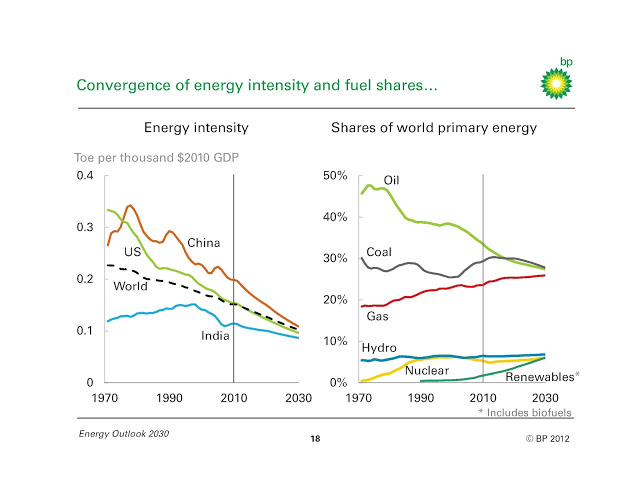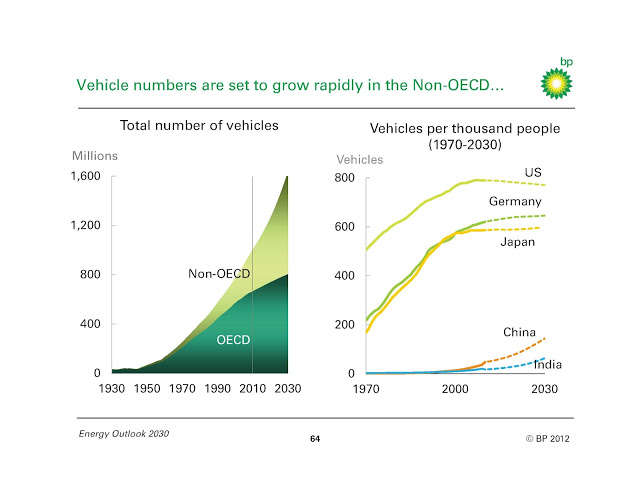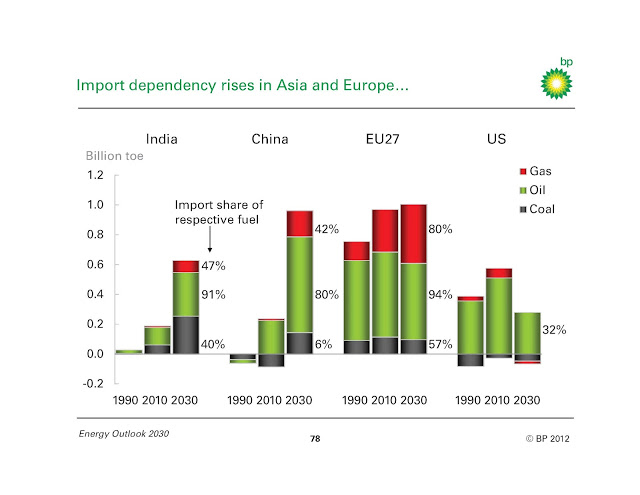Monday, February 13, 2012
BP’s Cheerful Energy Outlook for 2030
BP has a surprisingly cheerful energy outlook for 2030.
Energy intensity—the amount of energy it takes to produce a dollar of income—has been continuing a steady downward march for 40 years, and BP expects this to continue. By 2030, the major regions of the world—the U.S., China and India—will have the same energy intensity. Energy use will be diversified across sources: oil, coal, and gas will each have a 30% market share, with hydro, nuclear and renewables accounting for the remaining 10%.
Energy supply from the Americas—US and Brazilian biofuels, Canadian oil sands, Brazilian deepwater and US shale oil—will help in balancing supply and demand in 2030.
Vehicle ownership (per person) will hit saturation in the rich nations. And while it will grow in China and India, it will follow a slower path than seen historically in other countries.
If we could keep politics out of the picture, we could have an energy outlook by 2030 in which the America are largely energy self-sufficient, the FSU supplies nearby Europe, and the Mid-East and Africa take care of the needs of the Asia-Pacific.
Import dependence in 2030 is projected to be higher than it is today for all major energy importers—Europe, China and India—but will decline for the United States. BP predicts that by 2030 “the import share of oil demand and the volume of oil imports in the US will fall below the 1990s levels, largely due to rising domestic shale oil production and ethanol displacing crude imports. The US will also become a net exporter of natural gas.”
Posted by at 1:33 AM
Labels: Energy & Climate Change
Subscribe to: Posts




